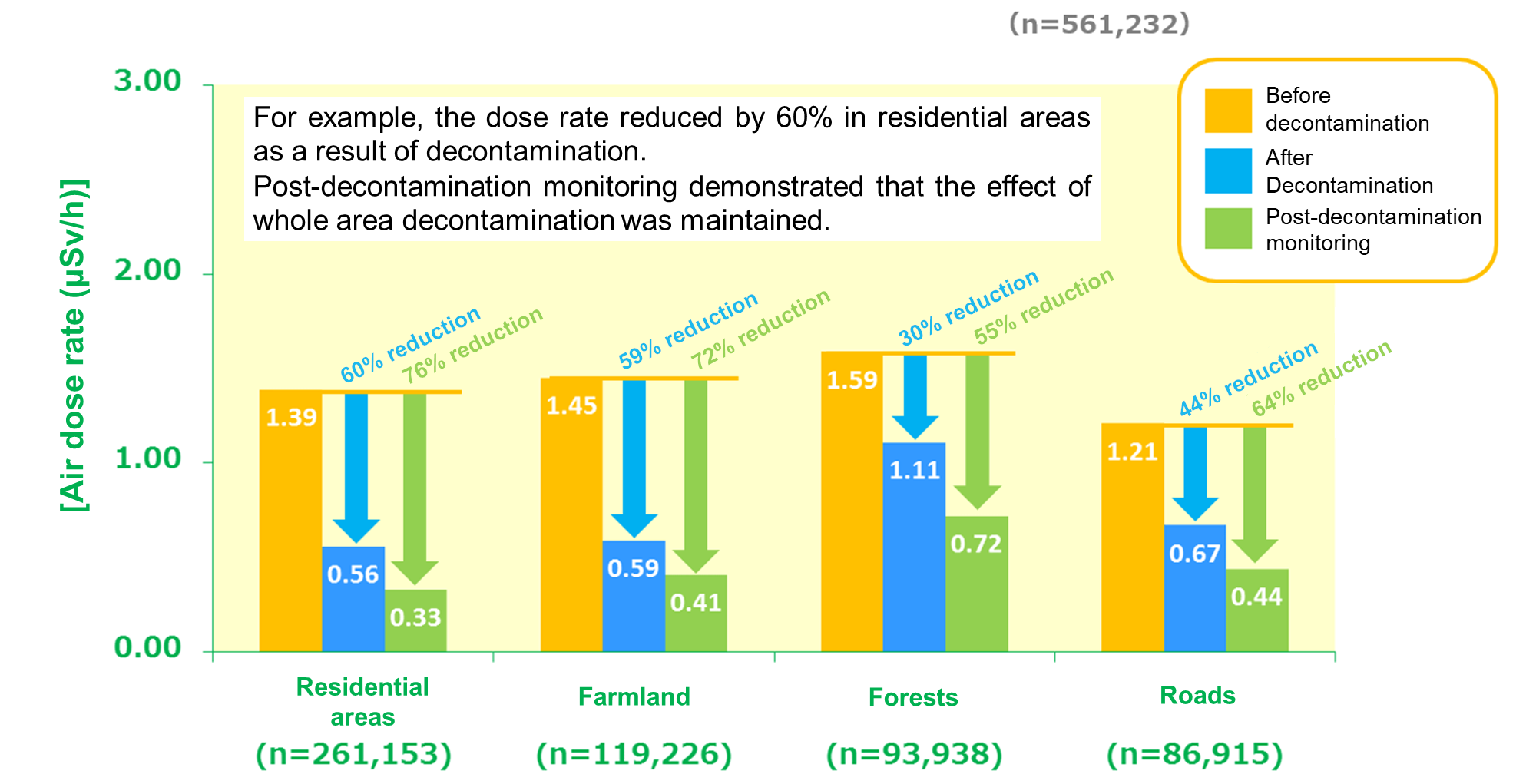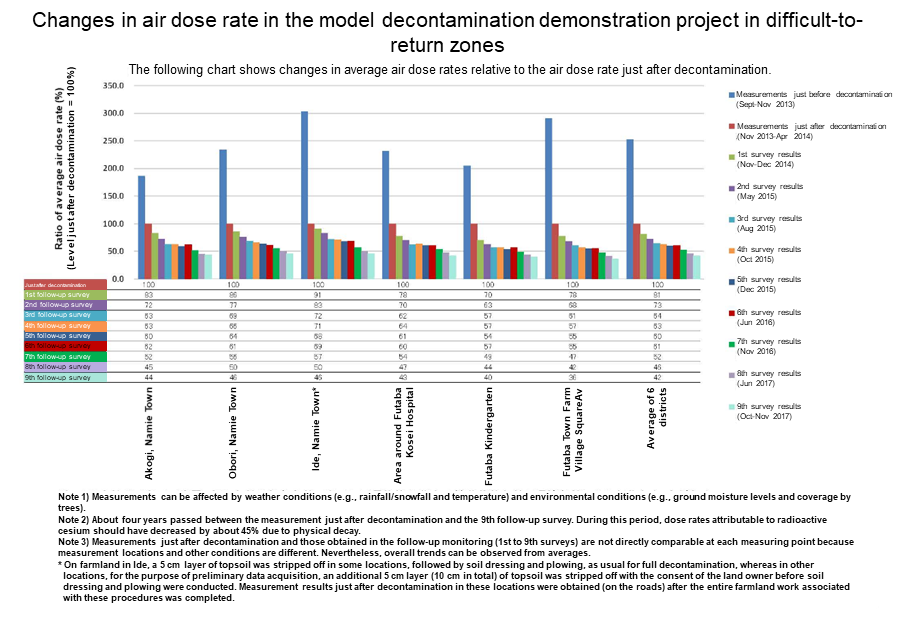Assessment of Exposure Doses and Decontamination
(2016)
QUrban areas have been decontaminated. Is there any residual cesium there?
AIn 2015, we surveyed the amounts of cesium deposited in various parts of difficult-to-return zones that had not been decontaminated, including dry fields, parking lots, and roofs and building walls made of different materials.
We found less residual cesium on building surfaces and pavements that were made of such materials as concrete or asphalt, although they had not been decontaminated.
On the other hand, the survey results showed that most of the cesium deposited after the accident remained in places like dry fields and parks, where the soil was exposed. This suggests that cesium adhering to concrete and asphalt has been gradually washed away by wind and rain and reduced. Cesium adhering to soil is considered less likely to move.
The Ministry of the Environment summarized the effects of decontamination projects on approximately 33,000 facilities that were implemented by national and local governments by the end of August 2013. The air dose rate was reduced by decontamination efforts by 30%–50% on average, depending on the location.

Fig.1 Changes in air dose rate at 1 m above ground, by land category
Source: The Ministry of the Environment’s website on Environmental Remediation,"Effects of Decontamination in SDA"(URL:http://josen.env.go.jp/area/)
Note: The chart shows the air dose rate average in the categories of residential area, farmland, forests, and roads (aggregated data of measuring points).
- Residential areas include schools, parks, cemeteries, and large-sized facilities, farmland includes orchards, and forests include slopes, grassland, and lawns.
- Post-decontamination monitoring was implemented six months to a year after the decontamination work to check whether the effect of decontamination was maintained.
- The latest results of post decontamination monitoring in municipalities were summarized.
Through continuous measurement after decontamination, it has been confirmed that air dose rates will not rise again due to recontamination.

Fig.2 Changes in air dose rate in the model decontamination demonstration project in difficult-to-return zones
Source: The Ministry of the Environment’s website on Environmental Remediation, “Changes in air dose rate in the model decontamination demonstration project in difficult-to-return zones (8th and 9th, page 3)”(URL:http://josen.env.go.jp/area/pdf/transition2_180323.pdf)

Fig.3 Measurement results in Okuma Town (2016)
- Transverse measurement of dose rates on paved roads surrounded by grassland where no decontamination had been conducted indicated the tendency that dose rates were lower at the center of the road and became higher as the distance from the road increased.
- This is presumably because radioactive cesium on the roads migrates with rainwater being drained and as the roads are cleaned.
Related articles
- What are the characteristics of places where air dose rates tend to decrease faster?
- Is it possible to predict how air dose rates in living environments will decrease in future?
- On which minerals does radioactive Cs get adsorbed?
- When it rains, does radioactive cesium flow out of forests with soil? 【137Cs flow in heavy rain】
- How much will the air dose rate be reduced by decontamination in the Specified Reconstruction and Revitalization Base areas? 【Example of analysis】
